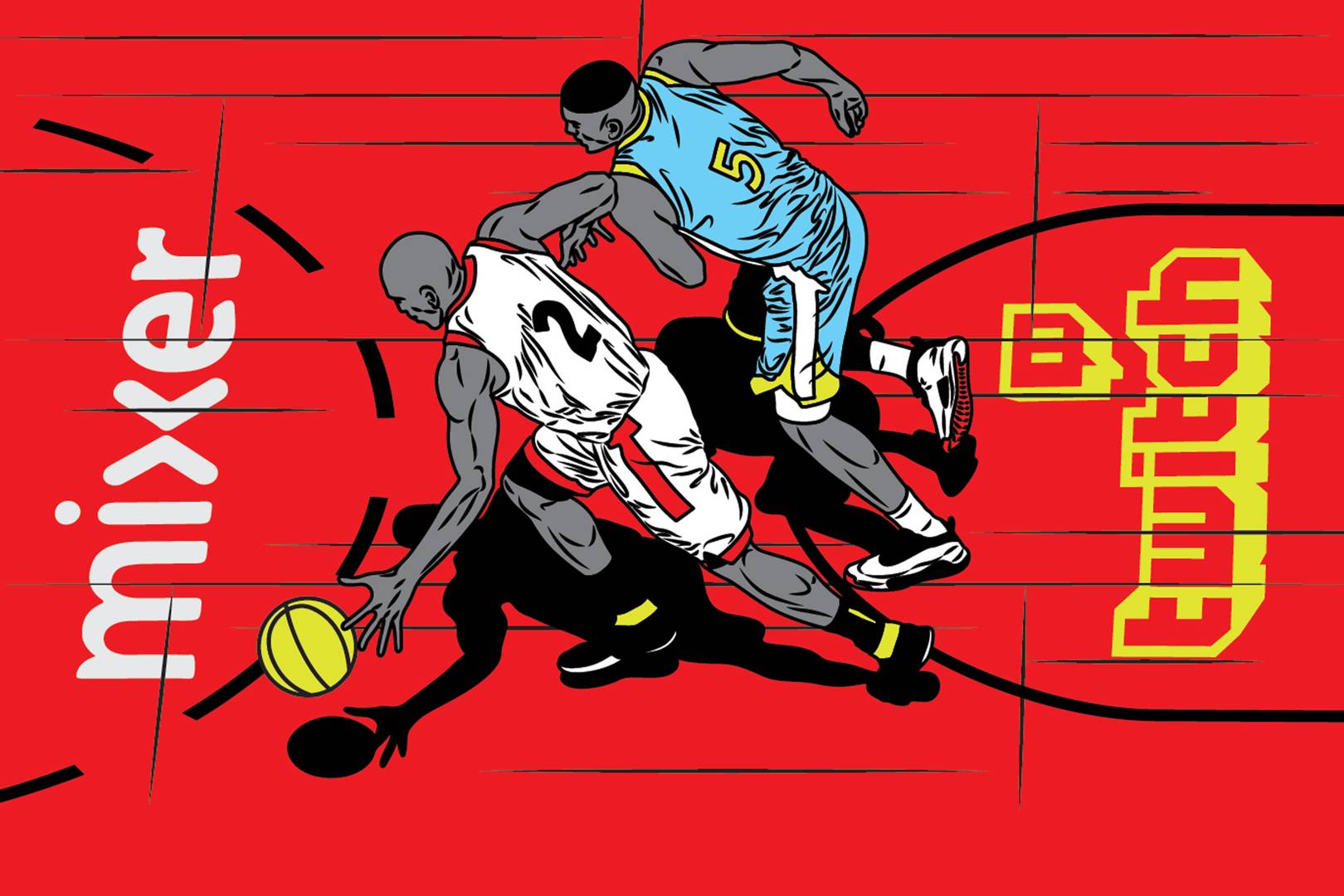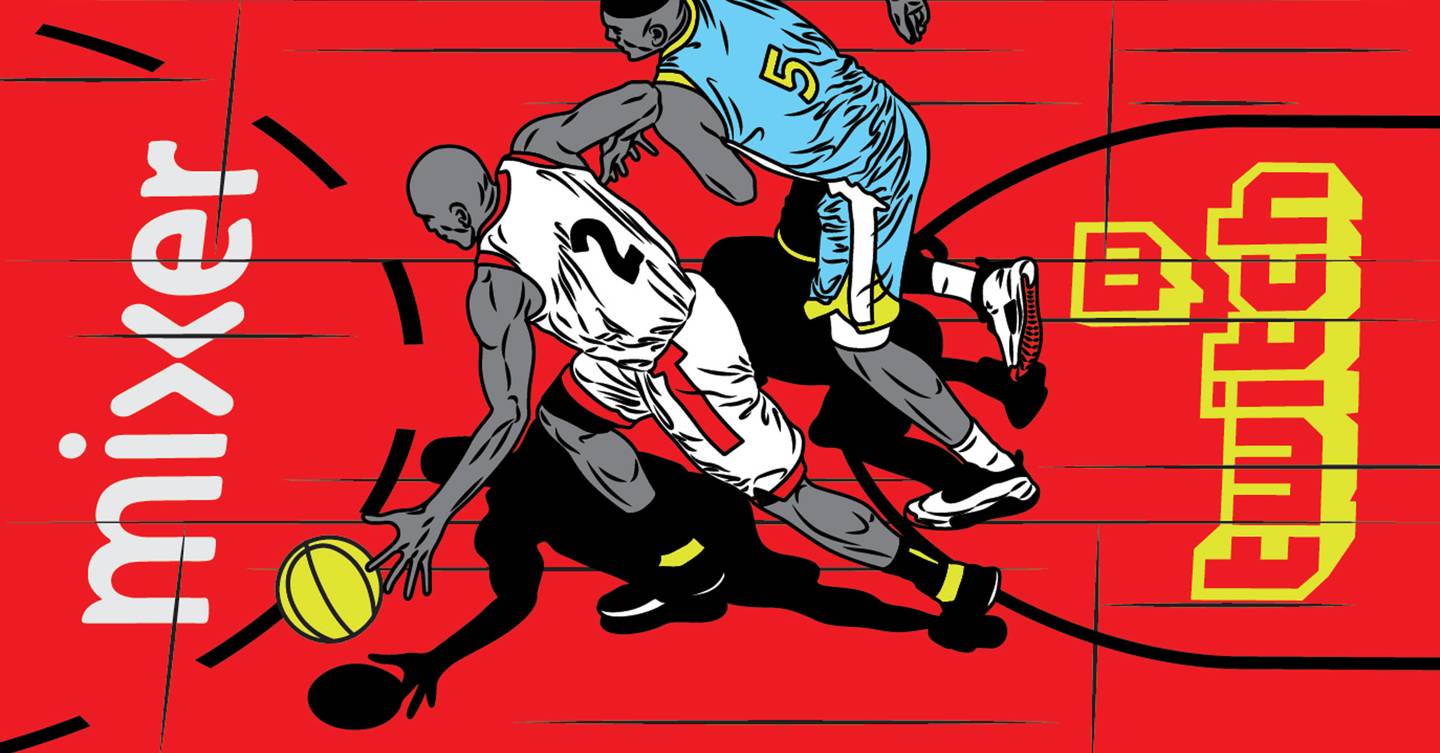

Imagine you’re watching a livestream of your favourite sport – a football match, say, or a tennis tournament. But instead of listening to the official commentator, you provide your own play-by-play analysis of the footage – and thousands of people hang on to your every word. This is the vision of Twitch CEO Emmett Shear, who sees a growing future for what he calls “interactive livestreaming” across the entertainment landscape.
Twitch, which was spun out of livestreaming startup Justin.TV in 2011 and is now a subsidiary of Amazon, is best known for its video game content; its top streamers have amassed millions of followers who watch them play games such as League of Legends, Fortnite and Counter-Strike: Global Offensive in real time. While gaming is far and away the most popular category on the platform, the company is starting to branch out into other sectors, with sport chief among what it sees as potential areas for growth.
Twitch has already streamed the UEFA Champions League and Europa League football qualifiers, and has made deals to stream USA Basketball games until 2020 and WWE wrestling pre-shows (the latter on a pay per view basis). One challenge with hosting sporting content, Shear says, is negotiating rights that allow Twitch streamers to run the broadcast on their own channels with their own commentary. “We go in and negotiate with the rights holders to get not only the underlying stream but the right for Twitch streamers to co-stream,” he explains.
This interactive element is what distinguishes Twitch and similar platforms from traditional broadcasting or “passive” video streaming services such as Netflix. People are not just interested in watching the content; they congregate around particular streamers and are encouraged to actively engage with them and other viewers by exchanging messages and emotes (small images that express a reaction, similar to emojis) in a live chat. Twitch also invites third parties to create “extensions” – overlays and other features that streamers can activate to interact with their viewers in different ways, for example by sharing real-time stats or holding a vote.
The result is many channels that are effectively streaming the same content – be it Fortnite gameplay or a wrestling match – but with their own spin on it. When it comes to sport, Shear imagines a channel that is dedicated to a particular player and follows them as they play in different tournaments or with different teams, or one that is focused specifically on goalkeeping. “We really think that that’s the future,” he says.
Beyond sport, Twitch is attempting to expand into other pastimes, such as music. In April 2019, it launched its first game under its own brand, Twitch Sings, a karaoke title, developed with US game maker Harmonix, that allows streamers to sing along (usually endearingly badly) to a library of pop and rock songs. Under the “creative” category on the platform, you can find streamers making their own cooking or crafting shows, while the “IRL” category includes people hosting talk shows or casually hanging out. In many ways, this marks a return to Twitch’s roots; Justin.TV started out as a “lifecasting” channel for co-founder Justin Kan, who livestreamed his daily life via a baseball cap-mounted webcam.
Despite initial attempts to expand into new areas, gaming still reigns supreme. At the time of writing, Fortnite, the most popular game on the platform, has 47 million followers; “Just Chatting”, one of the most popular non-gaming subcategories, has 3 million followers, and “Sports & Fitness” has 37,000. “We’re running experiments, we’re seeing a lot of promising small channels getting started, but it feels like gaming did in 2015 for us,” Shear says.
At the same time, Twitch is seeing more competition, especially on the gaming front. In August 2019, Tyler “Ninja” Blevins, who with 14 million followers had been the platform’s top streamer, made headlines when he announced he was moving from Twitch to Microsoft-owned Mixer, a similar livestreaming platform (albeit a significantly smaller one, with 30 million monthly active users to Twitch’s average 15+ million daily visitors). Chad Gibson, general manager of Mixer, says that while the platform allows for creative and IRL content, its focus remains firmly on gaming. He would not reveal the terms of Mixer’s agreement with Blevins, save to say that he believes the streamer will continue to be successful in his new online home. “It is a moment for a lot of people to learn through Ninja what Mixer is, so we think it’ll help provide material growth for us in the future,” he says.
One thing Mixer has to its advantage is a natural relationship with Microsoft’s other gaming properties, such as Xbox and planned cloud gaming platform xCloud. Gibson sees the potential for Mixer to work with xCloud as a tool for game discovery, with users able to go from watching a streamer play, say, the next title in the Halo series (which is published by Xbox Game Studios) to playing the game themselves in just a couple of button clicks. Perhaps they could even jump into the game to play alongside the streamer. “That connection of viewing to playing, we really believe in making that seamless over time,” he says.
Similarly, Google’s cloud-based gaming proposition, Stadia, boasts YouTube integration, allowing players to stream to YouTube by pushing a button on the Stadia controller – a feature that seems directly to target the success of gaming livestreams on Twitch.
The dawn of cloud gaming could also break down current distinctions between console, PC and mobile gaming, with gamers able to play titles previously capable of running only on specific systems across different devices. Gibson, who worked on Xbox Live before moving to Mixer, says he was shocked at the diversity of platforms on which people watch gaming livestreams, and particularly the number of mobile users. “People really love engaging with gameplay from wherever they are, and increasingly over mobile devices,” he says. “That’s one of the areas I think is going to provide fascinating opportunities.”
For his part, Shear says he is not concerned about increased competition, and finds the prospect of cloud gaming exciting. “Twitch has never not benefited from innovation in the game space,” he says.
More broadly, Shear sees the rise of interactive livestreaming as part of a broader shift in the entertainment industry towards live events and experiences. This, he says, harks back to a previous era of shared, community-style entertainment. “Entertainment was people sitting around a campfire, singing songs, dancing; it was the crier in the town square sharing the news,” he says. “It was always a two-way experience. It’s only really quite recently in entertainment history that we started having on-demand, one-way entertainment with a super-sharp divide between the producer and the consumer.”
More great stories from WIRED
🤕 No-deal Brexit would trigger a huge data problem
🔓 The iOS 13 privacy settings you should change right now
🔋 Tesla has created a battery that could last one million miles
🗓️ Four-day working weeks aren’t the utopia they seem
read more at https://www.wired.co.uk/ by Victoria Turk
Tech







